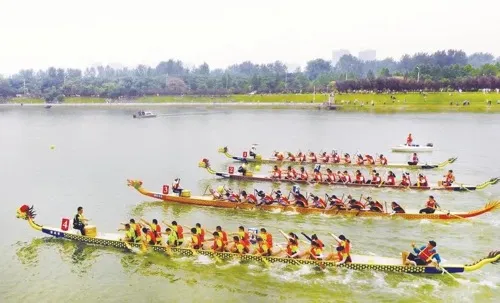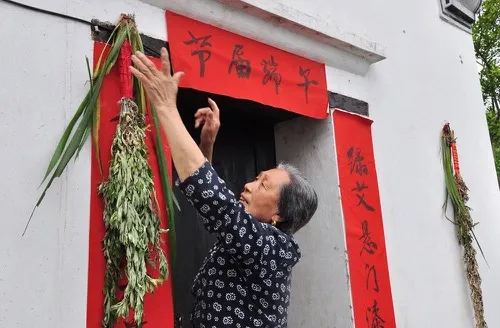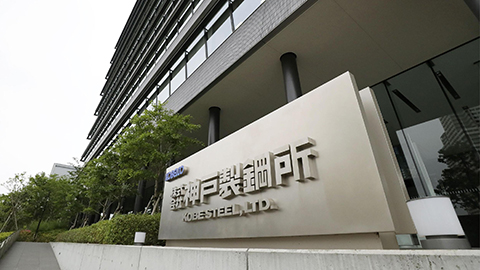For more than 40 years, multinational pharmaceutical companies have attracted countless amounts of money by virtue of China’s policy bonus and the environment where they have little power to compete with it.
In the running-in of multinational pharmaceutical companies and China’s characteristic market economy for more than 40 years, it has gone through the process from the initial foreign monks who can recite scriptures, to disenchantment, to checks and balances, and then to adjustment and discovery of new modes of getting along.
Objectively speaking, multinational pharmaceutical companies have contributed to the development of China’s pharmaceutical industry, and they have participated in creating the second largest pharmaceutical consumption market in the world.
However, they have enjoyed "super-national treatment" in China for a long time, including independent pricing and tax concessions.It has also brought many problems, including the intensification of overcapacity at the industrial end; The drug price in the public remains high, and patients can’t afford drugs.With the rise of local pharmaceutical companies, it is almost inevitable that their aura will recede.
The rise and fall of multinational pharmaceutical companies in China perfectly fits the development course of the whole pharmaceutical industry in China. So,The road taken by multinational pharmaceutical companies in China is almost a history of the development and policy changes of China’s pharmaceutical industry.
First, the first encounter: the introduction of more than just funds.
In 1978, China Pharmaceutical gross industrial output value was 7.3 billion yuan, which may not even be comparable to the revenue of a pharmaceutical company Pfizer-in the 1970s, Pfizer’s annual revenue was 1 billion dollars.
At that time, the pharmaceutical industry in China was in the stage of stumbling, and competitive domestic enterprises did not exist. There were only more than 500 kinds of drugs that hospitals could use daily.
Later, Yangzijiang Pharmaceutical, which claimed to have an annual income of 100 billion yuan, was still an unknown small factory in the town; Lianyungang Pharmaceutical, the predecessor of Hengrui, is still making hemostatic and disinfectant, and Sun Piaoyang, the technician who changed its fate, was not assigned here until four years later.
At first, foreign pharmaceutical companies were introduced, not for new drugs, but to introduce a large infusion model production line that meets the standards and can be sold all over the world.
The first foreign pharmaceutical company to enter China was Otsuka Pharmaceutical Co., Ltd.. It was signed in 1980 and put into production in 1984. By the end of 1980s, Otsuka, China had been able to produce 8 kinds of injections, which were supplied to big hospitals in Beijing, Shanghai, Tianjin and other cities, and also sold to Japan, with a double-digit increase in production capacity, sales volume and profit.
Otsuka, China, made a good start, and a large number of multinational pharmaceutical companies began to tentatively enter China.What they value has also developed from China’s industrial policy, preferential tax, low cost and labor to China’s huge market.
According to Medicine World, China joined the World Trade Organization as of December 2001.The number of foreign-funded pharmaceutical enterprises in China has reached about 1790. The top 20 pharmaceutical companies in the world have invested and set up factories in China. In terms of market share, these enterprises account for half of the pharmaceutical market in China.
More important than market share,From production to sales, these foreign pharmaceutical companies have almost reconstructed the pharmaceutical industry in China.
Foreign-funded pharmaceutical companies not only brought more funds, mature technologies, brand-new concepts and management models, and more available new drugs to the pharmaceutical industry in China, but also brought the mainstream sales model in the pharmaceutical field at that time-academic marketing, and a new profession-pharmaceutical representative.
By 2016, China has more than 3 million medical representatives, supporting a huge sales system with a scale of 2 trillion drugs, serving 12,000 public hospitals in China.
In 1980s in China, under the strict planned economy system, pharmaceutical companies completed their production as planned, and then they were purchased by local pharmaceutical companies for unified deployment.
Pharmaceutical companies do not need to face the terminal market directly, and no one knows how to sell drugs in the modern pharmaceutical industry.
The pharmaceutical industry in Europe and America, after experiencing the rapid expansion and fierce competition after World War II, has long understood the key to the commercialization of medicine-doctors with prescription rights are the real customers of pharmaceutical companies, and the sales model for doctors is the truly effective modern pharmaceutical sales model.
Established in 1985, Xi ‘an Jansen introduced Jansen’s staff training mechanism and built the first pharmaceutical sales team in China, which is known as the "Whampoa Military Academy" in China’s pharmaceutical industry..
Most of these first-generation medical representatives employed by foreign-funded pharmaceutical companies have professional backgrounds, have access to first-hand scientific research materials, and were respected by doctors in the early days.
However, the situation changed quickly, and some domestic pharmaceutical companies quickly grasped the essence of pharmaceutical marketing and alienated it, resulting in sales with gold and kickbacks-hidden transactions.The cost once soared to 60% of the drug price..
Under the pressure of sales, foreign pharmaceutical companies have also begun to adopt a more subtle way of bribing doctors, as foreign media mentioned in a report in 2013: "Persuade with cash, gifts, vacations and other benefits.Write more prescriptions. "
All these will lay the foundation for a huge bribery case that is almost comparable to Waterloo, China, a multinational pharmaceutical company.
Second, localization: the rapid development of golden decade
In 2001, China officially joined the WTO.China’s reform and opening up has deepened its integration with the world economic system.
Under the expectation of opening up to China and the expectation of the vast market, multinational pharmaceutical companies began to "settle down" frequently.
According to the later analysis of the industry, this process is to compete for the market, but also a confession meeting to show confidence in the China market. The giants scrambled to present "warlords" by investing in the establishment of R&D centers and factories.
After January 2002, more than 10 giants such as Novo Nordisk, AstraZeneca, Roche, Takeda, Pfizer, GSK and AbbVie also set up R&D centers in China. Lilly Asia Venture Capital Fund has also targeted the China market, with an initial investment of US$ 10 million, and plans to invest US$ 100 million in drug research and development capacity in China within five years.
According to industry statistics, by 2016, these multinational pharmaceutical companies have spent more than 8 billion yuan just to set up research centers in China.
Different from the new construction in the field of research and development, the "falling" in the field of production and sales is more like a game of "greedy snake".
In 2000, Pfizer won the largest acquisition in the history of the pharmaceutical industry with a sum of 90 billion US dollars, acquired its research and development company Warner-Lambert, and put Atorvastatin.In the pocket, thus surpassing Merck, the former overlord, and ranking first in the pharmaceutical revenue list. This also triggered a wave of mergers and acquisitions
This "snake-eating" game also extended to China. On July 2, 2008, after nearly two years’ efforts, Bayer finally completed the necessary regulatory approval and bought Dongsheng Technology’s "White Plus Black" and other anti-cold and cough products for 1.072 billion yuan.This also opened the prelude for multinational pharmaceutical companies to merge with China pharmaceutical companies.
Second yearIn the first half of the year alone, at least seven multinational giants announced the expansion of factories and production lines or the news of mergers and acquisitions and joint ventures. In the 2010s, the momentum became stronger and stronger. Merck, Pfizer, Sanofi, GlaxoSmithKline, Novartis, etc. joined in one after another. Among them, Sanofi bought the local pharmaceutical company Meihua Sunstone Group and bought a high price of over 520 million US dollars, which was the largest merger in China at that time.
Correspondingly, during the critical period of attracting investment in China, multinational pharmaceutical companies almost enjoyed the "super-national treatment" in policy.
Among them, mainly including tax incentives; Independent pricing, filing system, etc. Among all these "treatments", the most "useful" is the right of independent pricing.
Before the government pricing of most drugs was officially cancelled in 2015, only exclusive varieties could be priced independently. However, multinational pharmaceutical companies often introduce patented drugs into China, which can set higher prices.
This makes these drugs form a "scissors gap" with domestic drugs.
During this period, the scale of China pharmaceutical market has been greatly expanded. The output value of the top 100 pharmaceutical enterprises exceeds 300 billion yuan, but the concentration is less than 35%. The enterprises are "small, scattered and chaotic", and the product quality cannot be compared with imported drugs, let alone replaced. In order to compete for the market, a unique marketing model with gold sales was formed, and "emphasizing sales and neglecting research and development" began to become the mainstream of market competition during that time.
The market mechanism fails in the medical field, and the higher the drug price, the more room for operation. This is even more powerful for multinational pharmaceutical companies.Imported drugs occupy the commanding heights of the pharmaceutical market. And this advantage is more and more obvious after the patented drugs have passed the protection period.
Before and after 2006, the former director of National Medical Products Administration, Zheng Xiaoyu, was sentenced to death. As a warning, the whole drug supervision system overcompensated the behavior of rent-seeking and approving homogenized "new drugs". The drug review and approval in China was tightened rapidly, and the approval speed of domestic generic drugs was slow, resulting in a serious backlog.
In the pharmaceutical market of China, the price of drugs that have passed the patent period has started to remain high, and the gap with domestic generic drugs continues to widen.
According to some data, by 2013, the ratio of the original research drug of ceftriaxone to the retail price of generic drugs has expanded from the previous 6.25: 1 to 9.35: 1. One product and two regulations in the hospital have also become an imported product and a domestic medicine.
Many "life-saving drugs" with high technical barriers even have the highest situation in the world. For example, Gleevec of Novartis entered the mainland market of China in 2002, and the price per box was as high as 25,800 yuan. Since then, the price has remained basically stable, and by 2014 it has been much higher than 17,000 yuan in Hong Kong, China and 13,600 yuan in the United States.
Under the disparity of strength and weakness, multinational pharmaceutical companies have gradually entered the golden age of "lying down to make money" in China.
In order to further expand their advantages, multinational pharmaceutical companies also strive to expand their sales teams.
According to a paper published by Yale Law School scholars in 2014, the top 10 pharmaceutical companies in the world employ about 25,000 sales teams in China. According to IMS statistics, multinational giants such as Pfizer, Bayer and AstraZeneca have more than 2,000 first-line medical representatives, and there is a trend of further expansion.
According to statistics, the pharmaceutical market in China achieved a compound annual growth of 25% in the decade after 2000, and the income of multinational pharmaceutical companies also rocketed. AstraZeneca, for example, has built a factory in China for four years, and its sales revenue has exceeded 1 billion yuan, which is called the "dream team" of multinational pharmaceutical companies. Although other pharmaceutical companies do not have more data to prove it, they can also see clues from the grand annual meeting.
After Pfizer acquired Wyeth in 2010, an annual meeting in Dongguan, Guangdong Province cost 30 million yuan and more than 5,000 employees participated. At that time, it was called the "annual meeting of the best company". Previously, Bayer led more than 1,600 employees to carnival in Jeju Island, South Korea for 6 days, and the industry analysis cost will not be less than 30 million yuan.For a long time, the annual meeting of multinational pharmaceutical companies in China is an event that attracts the attention of the industry.
It was a prosperous time for multinational giants to develop rapidly. However, in the carnival, no one noticed the hidden worries that might make their "aura" recede.
Third, the blow: loss of supranational status
In 2013, GSK was fined a sky-high price for bribery in China, several senior executives were sentenced and one foreign executive was deported.
For a long time before GSK bribery case, multinational pharmaceutical companies were often regarded as synonymous with professionalism and compliance because of their "halo" in China market.
Until 2004, foreign media published an article exposing the "kickback shady" of pharmaceutical giants.People suddenly discovered that some so-called "standards", "rules" and "international practices", which people take for granted as reasonable behaviors, such as traveling and lecture fees, also have the risk of interest transfer.
However, in the process of law enforcement since then, due to hidden methods and insufficient legislation in China, regulators have not made a clear statement on these behaviors.
After GSK’s bribery case in China was exposed, people suddenly understood that the localization of multinational pharmaceutical companies has extended to the field of sales with gold, and the amount is so huge.
According to public information: GSKIn order to increase sales, a large number of salespeople were recruited and paid bribes to medical staff in medical institutions all over the country. Travel expenses, lecture fees, organizing tours, etc. are all ways to expand the use of drugs or expand their use. Only after 2007, GSK, like more than 700 travel agencies and consulting companies, transferred 3 billion yuan, which was suspected to be used for "illegal fund disposal".
Since the GSK case, people have clearly realized that,China’s regulators are ready to "shoot".
In fact, multinational pharmaceutical companies entered the China market in the form of joint ventures from the beginning. Their technology is often not the latest technology. It is mentioned in Mainstream-Wisdom of the Leaders of Pharmaceutical Companies in China that the overseas direct investment theory of developed countries clearly mentions that the core technology will remain in the headquarters, and the second-rate technology and production line will flow overseas. Inadequate management, and multinational pharmaceutical companies create book losses and evade taxes by making high prices of overseas raw materials.
During this period, scholars in China also realized that we can’t catch up with the international level by introducing foreign capital to build tertiary industry.
However, in the early days of reform and opening up, China’s technology was too weak, and these mature technologies can meet the demand to a certain extent.
However, in the subsequent development, local pharmaceutical companies in China are also rising rapidly.
Today, even the world’s leading PD-1 inhibitor has become the object of research and development. According to Baiaotai’s announcement, after Bristol-Myers Squibb and Merck launched PD-1 in 2014, 85 of the 154 PD-1 in the world were developed or jointly developed by China enterprises.
Since 2018, only five domestic PD-1s in China have been approved for listing.
Under the pressure of domestic drug competition, the imported PD-1-O and K drugs, which initially cost 1 million yuan to be listed in the United States, were given the lowest price in the world as soon as they entered China. After several rounds of price wars, the annual cost continued to drop sharply.
Especially after the national medical insurance negotiations, under the offensive of price reduction of domestic drugs, although the above two imported drugs were not successfully negotiated, the annual expenses were also reduced from more than 300,000 yuan and more than 200,000 yuan to more than 100,000 yuan. The domestic PD-1 can even reduce the personal out-of-pocket expenses to 10,000 yuan.
The state-led "Major New Drug Creation" project was also launched in 2008. By 2019, there were 139 new drug certificates, 44 of which were Class I new drugs. These drugs are all "chips" in the game of medical insurance negotiation and forced price reduction of imported drugs.
Before the GSK bribery case was investigated, "domestic Iressa" Ectinib went on the market. This small molecule targeted drug with completely independent intellectual property rights in China broke the monopoly position of European and American pharmaceutical companies. In the first national negotiation in 2015, Iressa was forced to reduce the price by 55%, and the average monthly cost dropped from 12,000 yuan to about 5,500 yuan. This is not only the preface of domestic substitution of imported drugs, but also gives the competent authorities the confidence to severely punish GSK.
Nowadays, innovation has become the common choice of more and more head pharmaceutical companies. Statistics show that the total value of China’s pharmaceutical industry has been close to 3 trillion yuan by 2017. In 2019, the income from the main business of the top 100 enterprises reached 929.64 billion yuan, with a growth rate of over 10%. The average R&D cost is more than 550 million yuan.
According to Wind data, the R&D investment of A-share pharmaceutical enterprises in China was less than 10 billion yuan in 2011, and it has exceeded 50 billion yuan by 2019. Judging from the annual reports, in 2020, there will be as many as 14 R&D investments in China exceeding 1 billion yuan; The research and development of more than 40 pharmaceutical companies accounts for more than 10%.
China is increasingly emboldened to reduce the price of imported drugs. With more and more domestic innovative drugs on the market and generic drugs passing the consistency evaluation, a subversive reform is gradually taking shape.
The rules of the game have changed, and multinational pharmaceutical companies have changed from the role of "wrestling" with policy makers to ordinary players, who can only comply with the rules and compete fairly with local pharmaceutical companies.
Fourth, the Great Retreat: How many people want to go back ten years ago?
In 2017, leaving the shut-down Shanghai Lilly China R&D Center not only announced the end of an era, but also seemed to push down the first domino of foreign companies’ assets withdrawing from China.
Then Novartis dissolved the biopharmaceutical research and development team in China, and the early research and development of antibiotics and antiviral drugs was stopped, and 140 people were abolished; GSK China R&D Center was abolished, and the project under research was transferred to American research center; Novo Nordisk China R&D Center layoffs; AstraZeneca China preclinical research business divested …
Dominos continue to overwhelm more business.
In 2019, Lilly sold the rights of antibiotic varieties Xikelao and Jingkexin in Chinese mainland, as well as the production plant of Xikelao in Suzhou.
Pfizer also packaged mature products such as Lipitor and Luohuoxi into Pfizer Puqiang and eventually merged them with generic drug giant Mylan.
Since then, GSK and Novartis have also sold their factories in China. Boehringer Ingelheim stripped off the promotion of Aiquanle, Kebite, Silihua and Sihehua; Mengdi Pharmaceuticals is simply selling its business unit in China.
In 2021, more and more heavy product lines in the past were "killed with tears".
Then, a batch of drugs began to withdraw from the China market. Just three months ago.Among the 283 cancelled approval drugs announced by National Medical Products Administration, Weijianle of AbbVie is included., Yi Chery, Li Luo of Johnson & Johnson.Cape orchid with excellent time ratio, Novi of Merck..
Many of these products, such as Merck’s hypoglycemic drug Genevix, are on the track with annual sales of several billion yuan, and now it is a mixed feeling to leave.As for the strategic deployment of multinational pharmaceutical companies, some investors even ridiculed that this is the "Dunkirk" of the pharmaceutical industry.
In the past four years, the state organized the centralized procurement of medical equipment, which set off a huge wave in the pharmaceutical market in China, which was called "tsunami". Although only 218 varieties are involved at present, the market scale is 220 billion yuan, but its foreseeable influence has made people who are used to the traditional marketing to conquer the world feel insecure.
There is no room for further clinical promotion, regardless of whether the bid is won or not, because the price is cut at the waist and ankle. The traditional marketing model is facing unprecedented challenges. It is difficult for multinational pharmaceutical companies to win the bid in order to maintain global prices.
In the field of innovative drug research and development, the giants have also encountered close-knit struggles from local enterprises. The once unattainable PD-1/PD-L1 was dragged into the Red Sea by China pharmaceutical companies. From the annual cost of millions of yuan to the minimum of less than 20 thousand yuan.
Mature products are surrounded by generic drugs, new products are facing price cuts in medical insurance negotiations and rapid attacks from competitors. Multinational pharmaceutical companies are in a crisis of being besieged on all sides.
In order to maintain their advantages and seek new growth points, in addition to divesting "non-core business", the adjustment and breakthrough of multinational pharmaceutical companies have never stopped.
In January 2019, the distance from cardiovascular heavy drugs was "determinable"Just two months after losing the bid in the 4+7 pilot project, AstraZeneca, which is known as the "dream team", threw a heavy news: it has obtained the exclusive promotion right of Xuezhikang in Chinese mainland from the Green Leaf Group.
Multinational pharmaceutical companies sell proprietary Chinese medicines, which breaks through the inherent cognition of the industry. What breaks the industry cognition even more is that it has also started CSO., "big package business".
A year later, AstraZeneca accepted the exclusive promotion right of a medical-grade home twelve-lead ECG instrument in China. According to the medical economic news, the company will also package 100 products-50 domestic or imported agent products and 50 diagnostic equipment products.
The sales cooperation between domestic pharmaceutical companies and multinational pharmaceutical companies is getting closer and closer, and the industry is beginning to be surprised by this treatment. Even Pfizer, once a "big pharmaceutical factory in the universe", has come to an end.
Not long ago, Cao Junyang, vice president and chief medical officer of Pfizer China, also revealed in an exclusive interview with the medical profession that apart from speeding up the introduction of self-developed products into China, Pfizer will also cooperate with local enterprises or multinational enterprises to give full play to its "leading commercialization advantage in the pharmaceutical field in China".
Simply understand, that is, to give play to its advantages in the sales field.
With the accumulation of sales teams in the past decades, the choice of multinational pharmaceutical companies is unexpected, but it is reasonable.
With the aging and high incidence of cancer, the pharmaceutical market in China has maintained a high-speed growth all the year round. Foresight Industry Research Institute predicts that by 2025, with its growth rate of 14% to 17%, it will exceed 5 trillion yuan.
Such a "big cake" can’t be eaten without sincerity, and multinational pharmaceutical companies are also trying their best.
From 1980 to 2021, the scale of the pharmaceutical market in China increased from less than 8 billion yuan to nearly 3 trillion yuan.
Can multinational pharmaceutical companies that have lost their "aura" subvert their profit model for 40 years in a brand-new pattern and rules and find a new way in this trillion-dollar market?























 Li Jianfa [2019] No.225 Annex. doc
Li Jianfa [2019] No.225 Annex. doc
